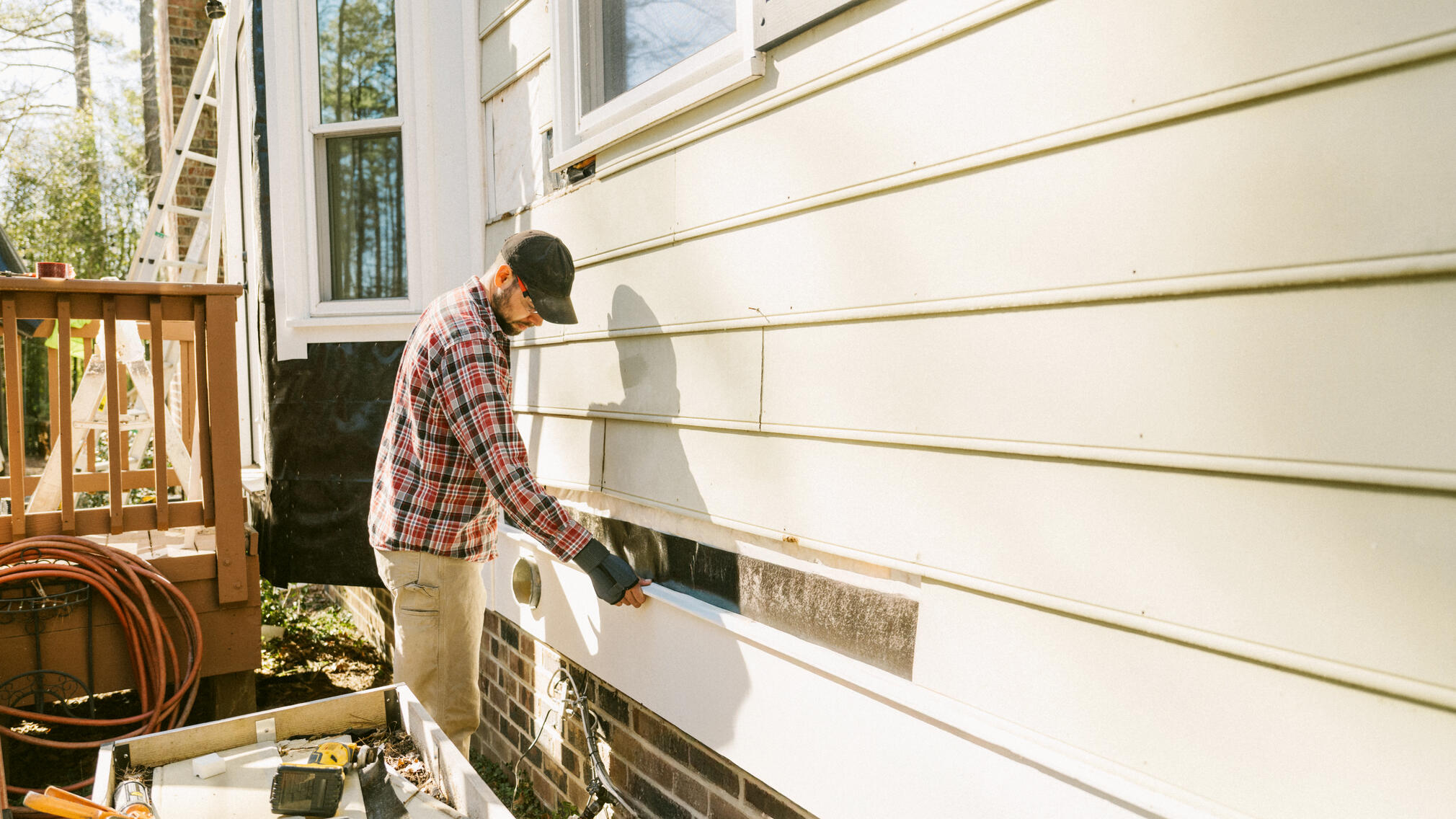Worth It or Money Pit?
Being able to tell the difference between small fixes and bigger issues can help you avoid taking on more of a project than you can handle or afford.


Written by Susan Kelleher on September 2, 2025
Edited by Jessica Rapp
Finding a well-priced “fixer” home where you can build equity through small, strategic improvements can feel a bit like winning the lottery. But unless you can spot the red flags that signal that the fixer is actually a money pit, you could find yourself saddled with a project that even a pro wouldn’t touch.
“Most homebuyers who willingly take on a fixer upper are doing it for financial reasons,’’ says Nick Gromicko, Certified Master Inspector and founder of the International Association of Certified Home Inspectors, a Boulder, Colorado- based industry organization. “Their plan is to invest their sweat equity into turning a home with issues into a dream home. But don't be fooled. A home is similar to the human body. It has to be evaluated holistically. Examine each issue and ask yourself ‘Is this a problem, or is it merely the symptom of a much bigger problem?"
Since the typical owner-occupied home in the U.S. is 40 years old, there’s a good chance that most homes will need some kind of work to restore them to their original glory. There’s a big difference, though, between a “fixer” that needs cosmetic finishes like paint or new fixtures and a “money pit” that needs a major overhaul in basic systems such as sewer lines, heating systems or roofing. Involving an expert to evaluate problems and offer repair estimates can save you a lot of heartache and funds.
If you’re the kind of person who gets excited about a home’s potential where others see only problems, here are some helpful things to watch for so you don’t open the door to bigger problems.
1. Foundation problems
Foundation issues are usually very expensive to fix, and can throw the entire home out of whack. Some tell-tale signs of foundation issues include large visible cracks, uneven floors, doors and windows that stick, gaps between walls and floors, bowed walls and water damage or other moisture-related issues not caused by a plumbing leak. If you’re planning to make an offer on a home that has foundation issues, make sure you know exactly what you’re walking into and how much it will cost to fix. An experienced inspector or a structural engineer should be able to pencil things out for you — or advise you to walk away.
2. Plumbing leaks
A plumbing leak by itself isn't necessarily a deal breaker, assuming the water hasn’t caused widespread damage to surrounding structures. But polybutylene plumbing — a type of plastic piping widely used in residential construction from the late 1970s to the mid-1990s — could be a sign of bigger headaches to come, says Gromicko. Poly B plumbing is susceptible to leaks and corrosion due to its reaction with chemicals found in potable water. In those cases, replacing the poly B plumbing could be the only option, he says.
3. Sagging roof
Depending on the material used, a typical residential roof should last 15 to -20 years. Signs that the roof might be on its last legs: leaks in the attic, peeling paint or staining on the ceiling, and shingles that are curling or popping up due to moss or excessive wear. A roof with multiple layers of shingles falls into “money pit” territory since it can mask more widespread damage and replacing it can cost a lot more, according to Gromicko.
4. Outdated electric system
One of the satisfying things about home improvements is being able to see the difference between what something looked like before you fixed it and afterward. So imagine spending thousands to fix something that will be forever hidden behind a wall. That’s what you can expect if you buy an older home with an outdated electrical system, such as knob and tube or aluminum wiring. Gromicko says that systems may also need to be updated to accommodate power needs of a modern home that includes air conditioning.
5. Mold
Mold is a type of fungus that thrives in moist conditions. Some types can cause allergic reactions and serious illnesses such as asthma and other respiratory conditions. Mold also can cause structural damage, even on concrete. Gromicko says a leak that causes mold to grow behind the walls and/or the subfloor could require demolition, mold remediation or reconstruction — a true money-pit situation.
6. Damaged chimney
A home where the chimney needs to be cleaned falls into the fixer-upper category. A cracked or leaning chimney, or one where the flu is damaged or too dangerous to operate without repairs gets you into money-pit territory, according to Gromicko.
7. Hazardous or toxic materials
Older homes, especially those built before the late 1980s, may contain asbestos. Common areas to inspect include insulation around pipes and furnaces, and in attics; vinyl floor tiles, roofing materials, and textured ceilings like popcorn ceilings. Visual tests are not always reliable, so you may either want to buy a kit so you can test it yourself or hire a professional to test the material. Any testing should be done carefully while wearing protective gear. Among the big ticket items flagged by Gromicko: Having a pro replace a boiler wrapped in asbestos.
8. Sewer and septic issues
A slow draining toilet could be a sign of a clog or something far more dreaded: a broken underground sewer line, says Gromicko. Repairing a broken line is a huge and costly undertaking that usually involves digging a trench in the yard to remove the old line, installinga new pipe and then backfilling the area. Think heavy machinery and professional plumbers and you’ll get an idea of how quickly the costs can add up. If the house is far from the sewer connection, which is usually near the property line, the job will be especially pricey.
The same goes for septic systems. Repairing one that is still functioning is a fixer job; replacing one where the field is saturated is money-pit territory, says Gromicko.
9. Old windows
Replacing old wood or aluminum windows can cost thousands of dollars, even if you opt for lower-cost windows. Replacements can pay dividends down the road because they’re likely to provide better insulation to cut down on heating and cooling costs. Whether this is a fixer issue or money-pit problem depends on the number of windows and your replacement choice.
10. Pest infestations
Insects and rodents can do a lot of damage to a home, much of it hidden from sight. The cost of this problem depends on the extent of the infestation and the types of damage caused by the invaders. For example, termites may require chemical treatments to get rid of them, and then replacement of any wood they chewed through. The same goes for mice, which can damage wiring and insulation in hard-to-reach places like attics and walls. Ridding a home of mice often requires a multi-pronged approach that usually involves a professional exterminator.
11. Poor drainage
If the home sits on a low part of the property, there’s a good chance that water will pool around or near the home, and seep into the basement or crawl space. Fixes can include a french drain, which is a trench filled with gravel or rock and a perforated pipe to redirect water. French drains also can be installed indoors, along the perimeter of the basement near the foundation wall. Both can be expensive options, especially indoor drainage that includes the installation of a sump pump.
Fixer versus money pit. How to tell the difference.
A fixer is a home that requires repairs or renovations, but is still worth fixing up because the house is still livable and worth fixing up. A money pit is usually an older home that requires ongoing and expensive repairs that drain your finances over time, making it a continuous drain on resources rather than a dream home.
| Fixer | Money Pit |
| The roof is older and will need to be replaced. | Three layers of shingles have to be removed first. |
| The air conditioner needs replacement. | Electrical service needs updating from 100 amps to 200 amps to accommodate new power needs. |
| Mold in the bathroom needs to be cleaned up. | A leak caused the mold to grow behind the wall and under the subfloor, requiring demolition, mold remediation and remodeling. |
| Chimney needs to be cleaned | Chimney flue is damaged, and too dangerous to operate until repaired. |
| The septic system needs to be repaired. | The septic system needs to be replaced because the leach field is saturated. |
| Toilets drain slowly. | Toilets are slow to drain because the underground sewer line is broken. |
| The boiler needs to be serviced. | The boiler has asbestos that will require professional removal. |
| GFCI and AFCIs -- devices that protect against electrical faults -- need to be installed. | The wiring is aluminum, and will have to be replaced. |
Source: Nick Gromicko, founder of the International Association of Certified Home Inspectors
Should I avoid buying a house that has problems?
That depends on your budget, your tolerance for construction and whether the money you spend fixing the home to your liking — or at least making it livable — will pay off. That payoff can be the pleasure you derive from living in the home or the equity you could build by making the improvements.
As you budget, keep in mind that home maintenance and upkeep runs more than $6,000 annually, according to research by Zillow and Thumbtack, a home management platform that enables people to fix, maintain and improve their homes. Also remember that the value of a home is influenced by others around it, so if you’re spending a ton of money to improve the home, make sure the value of other homes in the neighborhood is comparable so you stand a better chance of recouping your investment when you sell.
One way to protect yourself is to tap the expertise of professionals like your real estate agent, loan officer and home inspector to identify the issues that need to be fixed, determine what it might cost to fix them, and whether it’s worth making an offer on the home. If you do decide to move forward, your agent can help you craft an offer that takes some of the bite out of the costs.
For example, you could:
- Ask the seller to discount the home to help share or cover the cost of the repairs
- Negotiate other concessions, such as closing credits, from the seller that will allow you to save money in other areas
You also could consider a construction loan to rehab the property, or keep looking for a home that won’t require as much work or expense to fix. A fixer could be well worth the work, especially if you can live it in while making improvements over time. A money pit could just be a lot of heartache.
The important thing is to get as much information as you can about the home so you can budget and not get in above your head.
A local agent can help you stay competitive on a budget.
They’ll help you get an edge without stretching your finances.
Talk with a local agent


